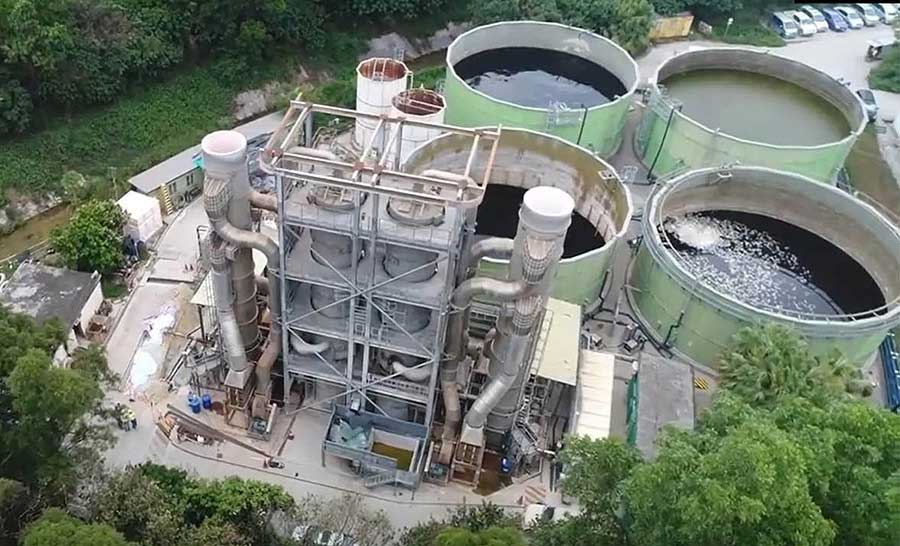Ammonia Recovery from Wastewater
Return to Articles and Commentary
Ammonia from Wastewater
Wastewater management can be complicated. A principal reason is that excessive ammonia concentration in wastewater can cause issues with odor and the ability to clean and reuse the water. If it is not removed before release to the environment, it is highly toxic for aquatic life.
Traditionally, and as effluent from wastewater treatment plants must meet the highest standards, ammonia has been removed using bacteria before disposal of water into sensitive environments or for reuse but treatment can be more challenging during colder months when bacteria are less active. Filtration methods such as reverse osmosis can reach low ammonia concentrations but, apart from being energy-hungry, also produce a concentrated ammonia brine that has to be disposed of.
Using these methods for removing ammonia from wastewater can also directly affect the operational bottom-line profit as, if a carbon source that acts as food for anoxic bacteria is required to remove ammonia from wastewater, operational costs can be prohibitively expensive.
Ammonia released to the environment is recognized as being lethal to aquatic life because it reduces oxygen in the water to levels where life cannot survive. Ammonia also acts as a fertilizer causing the profuse growth of stringy bacteria or fungi, and consequent harmful disruption of the natural environment. Its removal from any water to be released to the environment or destined for recycling is therefore paramount.
Today though, there is growing recognition that ammonia in wastewater need not be a problem but can also be viewed as being a potential resource. If ammonia can be recovered from wastewater, it has the potential not only to ensure minimal environmental impact, but it can also to contribute to a significant reduction of operational costs. Also, if ammonia concentrations are high enough, it can represent a significant commercial opportunity.
The ammonia molecule is comprised of four atoms, one nitrogen, and three hydrogen atoms, with the hydrogen atoms carrying the thermal energy. If combusted, ammonia burns to give water and nitrogen. Consequently, its use as a viable fuel is currently being investigated for several applications including ammonia-powered fuel cells, as ammonia can be transported much more readily than hydrogen, as a manner in which the distribution network for a hydrogen-driven economy can be successfully implemented.

There are several techniques for removing ammonia from wastewater. One that has been successfully implemented on several sites is that of treating highly ammoniated effluent using waste heat to thermally separate ammonia from wastewater. This technology has been employed to treat and remove ammonia from both landfill leachate and wastewater from food waste anaerobic digestion plants. Waste heat from, for example, landfill gas engines, raises the temperatures of the wastewater to a point where, if it is run counter-current to a stream of air, the ammonium ion is preferentially stripped off and fixed within the air stream as a gas; a feature that ensures it can either be destroyed under controlled conditions in a flare stack or, if appropriate, it can be concentrated and recovered in a useable, commercially viable form.
Ammonia is increasingly recognized as a compound that, whilst being highly polluting if released to the environment untreated, can also be recovered and thus represent a viable commercial resource. Using waste heat as the basis for ammonia removal and recovery meets the combined objectives of ensuring a long-term sustainable two-pronged solution to the challenges of ammonia pollution and the recycling of waste material; this latter, one of the defining tenets of the circular economy.
The principle of using heat to separate out ammonia from landfill leachate is being successfully applied in Hong Kong. On this large landfill site, leachate is highly ammoniated, containing up to 8000 mg/l. As the site produces so much landfill gas, this is used to heat the leachate prior to separation in the stripping towers. From there, the ammonia concentration is reduced to <150mg/l and is treated the adjacent sequence batch reactors prior to release outside the boundary of the landfill site. The site produces up to 9 tons of ammonia a day.
Designed at the Edge of Eden. © Organics Group 2024

